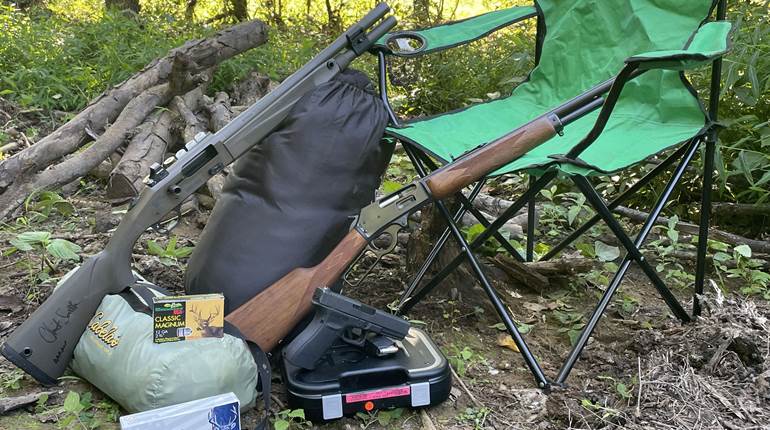In the 1890s, Imperial Russia embarked on an effort to modernize its military, adopting the M1891 Mosin-Nagant rifle and, later, the M1895 Nagant revolver. Unlike many other service revolvers of the time, the Nagant had a unique mechanism designed to get the most out of its cartridge. Watch our "American Rifleman Television" I Have This Old Gun segment above to learn the story.

"The Nagant's a cool revolver, and, in fact, it was designed by Belgian Leon Nagant, who had designed revolvers and other firearms for dozens of years before he came up with the Model 1895 for the Russians," said Philip Schreier, director, National Firearms Museum. And the idea is pretty neat. It's a 7.62 cartridge. It doesn't look like anything else. It kind of looks like a bottleneck wadcutter, and that's because the head of the cartridge is actually sunk into the casing so that when you cock it, the cylinder actually rotates and then advances forward so that there's no gas leak between the face of the cylinder and the breech of the barrel."
This unique cartridge, combined with the cylinder-advancement mechanism, meant that the Nagant was able to produce about 70 f.p.s more in muzzle velocity compared to revolvers that lost escaping propellant gases in the gap between the cylinder face and the breech of the barrel.

"When you look at these early guns made by the Belgians, I've only seen a couple, they're, really well done," said Mark Keefe, editorial director, NRA Publications. "I mean, typically, there's not much finish left on them anymore because they've seen hard use. But in terms of the polish and the mechanics, they're very nice guns fully in keeping with quality guns made for any military anywhere in the world at the time. But eventually the Russians decided that, "Yeah, we need to make these ourselves.'"
The Russians bought all the tooling from Nagant and began producing the revolver at the Tula state arsenal. Ultimately, more than 2 million M1895 Nagant revolvers would be produced from the 1890s until the end of World War II.
 "Despite having this novel gas-sealing mechanism, it still loaded and unloaded like a traditional single-action revolver. It had a loading gate on the right side of the frame that you had to open up, and then you had to manually remove cartridges and manually insert cartridges one at a time. So very cumbersome, very slow to load and unload," said Evan Brune, American Rifleman executive editor. "The other standout element of the Nagant revolver was that it had a horrifically heavy trigger pull. Trigger pulls range anywhere from about 12 lbs. in single-action mode to 20 lbs. in double-action."
"Despite having this novel gas-sealing mechanism, it still loaded and unloaded like a traditional single-action revolver. It had a loading gate on the right side of the frame that you had to open up, and then you had to manually remove cartridges and manually insert cartridges one at a time. So very cumbersome, very slow to load and unload," said Evan Brune, American Rifleman executive editor. "The other standout element of the Nagant revolver was that it had a horrifically heavy trigger pull. Trigger pulls range anywhere from about 12 lbs. in single-action mode to 20 lbs. in double-action."
Today, the Nagant revolver is a popular military-surplus collectible and can be had at reasonable prices compared to other military sidearms. Despite their affordability, finding ammunition can be a challenge.

"The initial guns that were produced both at Nagant and in at the Tula arsenal were really fine guns. The finish was very good. Quality was good. As time progressed, and they went through World War II, and this was still a very popular gun in World War II, they worked, but the fit and finish definitely diminished," said Garry James, American Rifleman field editor. "Lately, a lot of the guns that you've been seeing for sale were guns that were actually sold by the Russians, and they have been refurbished. The early guns, such as the one we're looking at here, was made in 1914. It hasn't been fooled with, and brings, you know, several hundred dollars."
To watch complete segments of past episodes of American Rifleman TV, go to americanrifleman.org/artv. For all-new episodes of ARTV, tune in Wednesday nights to Outdoor Channel 8:30 p.m. and 11:30 p.m. EST.


























